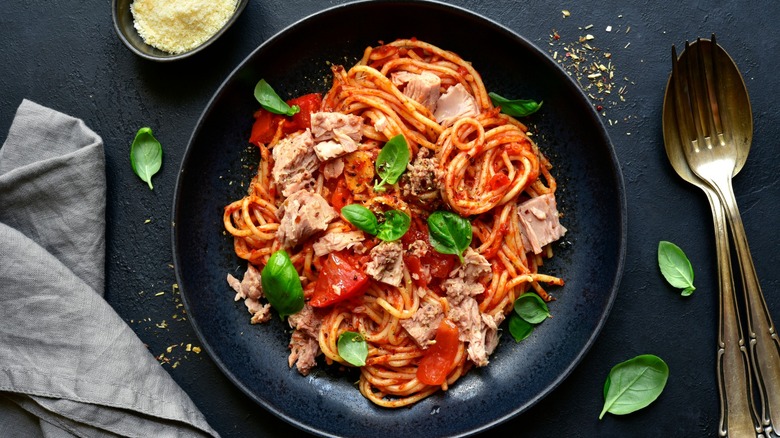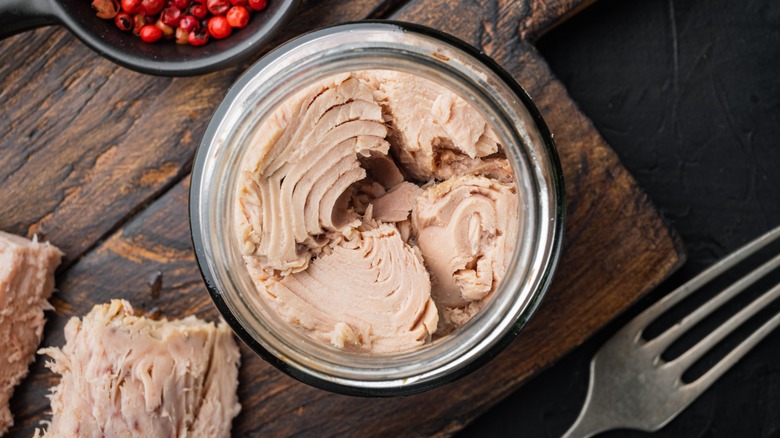Canned Tuna Is The No-Cook Addition Your Weeknight Pasta Needs
A can of tuna is a pantry staple that likely finds its way into your shelf repository. This humble food is actually quite versatile, and can be upgraded in many ways to turn a simple go-to into part of a more refined dish. Many dishes feature canned tuna as a main ingredient, such as tuna salad or a tuna sandwich. But there tends to be a focus on how you can elevate these dishes by changing the ingredients around the tuna itself. You might consider making a simple swap in your tuna salad, or adding an extra ingredient to your tuna salad, but have you ever considered how canned tuna might be used as an enhancement ingredient for other dishes too?
In the case of pasta dishes, a can of tuna is a quick and super simple addition that adds some heartiness and extra complexity to your dish. Canned tuna can make a great upgrade for a simple pasta dish (think something like an aglio e olio). And depending on whether you meld tuna flakes into your pasta sauce or keep it in chunks at the final stage of cooking, you can cater to your textural preferences in an otherwise nondescript dish. Pasta, tuna, oil, an optional sauce, and some herbs or spices are all you need for a quick dish that punches well above its weight.
What tuna, and which pasta, is best?
As far as a tuna pasta dish goes, any canned tuna will technically suffice, but some are going to add more to the pasta than others. Tuna stored in water is perfectly fine, but of course water won't contribute anything to your dish in terms of flavor. Plus, you'll want to drain that water anyway so that it doesn't water down your pasta when the tuna is added. With this in mind, tuna that's canned in oil (usually olive oil) is a great choice since it adds more richness to your dish. You can still drain the oil from the can if you'd like — there'll be enough oil in the fish itself to make a difference in rounding out the dish's flavor profile, especially compared to tuna canned in water.
When it comes to which pasta to use, again, the choice is ultimately yours. Some recipes call for a long noodle like spaghetti or linguine, while others opt for a sturdy short noodle such as penne or farfalle. You can also lightly toss your tuna in the pasta to keep it from breaking apart too much, or you can stir it into your pasta sauce to let it incorporate within the dish. Ultimately, there are no strict rules here, so don't be afraid to use whichever pasta or recipe speaks to you! And with a formula as easy and satisfying as this, it's likely you'll be making it a few more times anyway.

